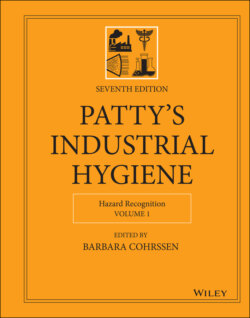Читать книгу Patty's Industrial Hygiene, Hazard Recognition - Группа авторов - Страница 123
6 RISK COMMUNICATION WITH WORKERS
ОглавлениеFor workers, their most important understanding of EHS‐related expectations and necessary controls boils down to a simple concept; what do they need to make sure is in their toolbox as they go out and perform a hard day's labor? Teaching workers the basics of the RLBMS approach can be done in as little as five minutes. Using the traffic light concept is the most effective way to begin. Everyone understands red and green, and the yellow light discussion is a great talking point about the need to overcome objectivity in workplace decision making. Acknowledging that checking for the police at a yellow light is a direct comparison for workers looking for the presence of EHS staff when making decisions on whether or not to use controls. It is also an excellent conversation to begin the shift toward building a mutual trust. By splitting the yellow light into RL2 and RL3, and clearly communicating that crossing the line into RL3 requires EHS discipline involvement, this leaves the RL2 tasks as the golden category for workers to prioritize achieving. Workers will fully understand that certain tasks will require a more complete EHS staff review at RL4. In fact, once this RLBMS approach to risk communication is taught, workers often become the best information source for where these highest risk tasks occur and may even have thought about what might be the right controls necessary to reduce these work‐related risks. Once this risk communication language is understood by workers, when the EHS staff identify a given task as RL1–RL4, the workers then will also comprehend what they need to put in their toolbox on any given day.
RL2 tasks have the potential for problematic work‐related exposure to risk. Therefore, it is understood by workers that a set of established controls that often require EHS staff involvement for establishing appropriate confirmation of the reduction of risk will require the necessary discipline and employee teamwork that is so beneficial for improving workplace safety culture. At times, such as potential chemical exposure monitoring that has not yet taken place, an IH may require a task to be deemed RL3 and the use of respiratory protection must be in place until this monitoring confirms the effectiveness of controls so it can be classified as an RL2 task. This process also cultivates worker and EHS staff communication and the potential to build trust toward achieving the golden RL2 task designation. Discussions with EHS staff and a given working group, industry sector, or manufacturing operation are an essential component of this risk communication process. EHS professionals should not be surprised when workers understand this system so well that they begin building a solid case, using discipline‐appropriate language, for why a given task should be RL2 and not RL3. Discussions like these assist all stakeholders in breaking down work areas into tasks that are to be evaluated for where in the RLBMS spectrum of the RL1 to RL4 bands do the EHS disciplines place each of these tasks. As a result, employees, their managers, and EHS staff have a clear layout for prioritization of upcoming work with the RL4 and RL3 tasks becoming the most important areas for focusing resources. It has been found in practice that approximately 75% of standardized tasks fall into the RL1 and RL2 categories (32). A documentation of these controls for each task begins the process of affording the workers the trust that is necessary for achieving a clear, practical, and mutual risk communication that can create a proactive approach to primary prevention and provide a path toward a safe and healthy work environment.
